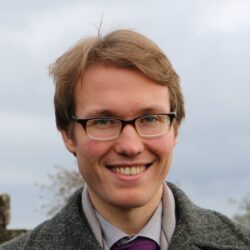In July 2014 I travelled to Geneva in Switzerland to visit the largest scientific experiment in the world, the Large Hadron Collider (LHC) at the European Organisation for Nuclear Research, better known after its acronym: CERN. On top of the visit to CERN’s facilities in Geneva, this trip was intended for me to get to know two key programmes at CERN which I have a special interest in: knowledge transfer and public engagement.
Apart from the usual concerns about travelling, I was not much worried about this visit, as I have been to Switzerland before and have had many contacts in CERN who were to receive me. I pre-arranged not only the travel details, but also a series of meetings with some key people at CERN in particular the Head of Education and Public Outreach, leading CERN’s public engagement activities, and a Knowledge Transfer Officer, working on a portfolio of innovations that CERN released to the member states.
Fortunately, due to current LHC shutdown, I got to see three detectors up-close, two of the LHC’s four experiments: LHCb and ATLAS, and also a museum piece, part of the previous Large Electron-Positron (LEP) collider, called DELPHI. Excitingly, all of them are located in large underground caverns about 100m below surface.

Being a Physicist by background, I did understand some of the context perhaps a bit better than your average visitor, but the sheer size and complexity of the structure and the technology is breath-taking. Very helpful guides explained us what individual parts do and how it all comes together and answered our (naïve) questions. But best of all – I got to wear a CERN hard hat!
Over-ground, I spent a few hours in both of the CERN’s exhibitions, taking part in the sensorial experience of “the Universe of Particles” and having a glance at the history and science of CERN in “Microcosm”. But perhaps the best part of the over-ground experience was meeting people, either just being part of the buzz of CERN’s main canteen or in the meetings I pre-arranged.
The meetings were very exciting and illuminating as I got to know specifically what Knowledge Transfer Office looks like from the inside and was familiarised with some of the outreach efforts currently underway, including a pre-view of a brand new interactive classroom for school visitors called “S’Cool LAB”. I would have accepted a job offer in either of the groups there and then!

On my last day, I have had a few hours – and some sunshine – to spare, so I went to Geneva city centre, about 2miles away, to have a look around the historic old town, do a quick stroll by the lake, take a ride on a tourist-train through the famous diplomatic district (hosting the Red Cross HQ, a variety of international organisations and one of the HQ of the UN) and poke inside a few interesting museums: The Natural History Museum, The History of Science Museum , The History of Art Museum and The Red Cross Museum. Particularly the last of this list was impressive in its simple, yet powerful narrative of being human in the face of conflict and (natural) catastrophes.

Unfortunately, my trip was a very short one and too soon it was time to head back to Geneva Airport. However, it was packed with exciting new experiences and I am hoping to visit Geneva and CERN again in the future.

I would like to thank from the bottom of my heart the Principal’s Go Abroad Fund for making this trip (financially) possible, to Stephanie Hills, who was my primary contact in arranging my visit and to all the people that made it so interesting and enjoyable both at CERN as well as in Geneva generally.

